#Bell Telephone Company
Text
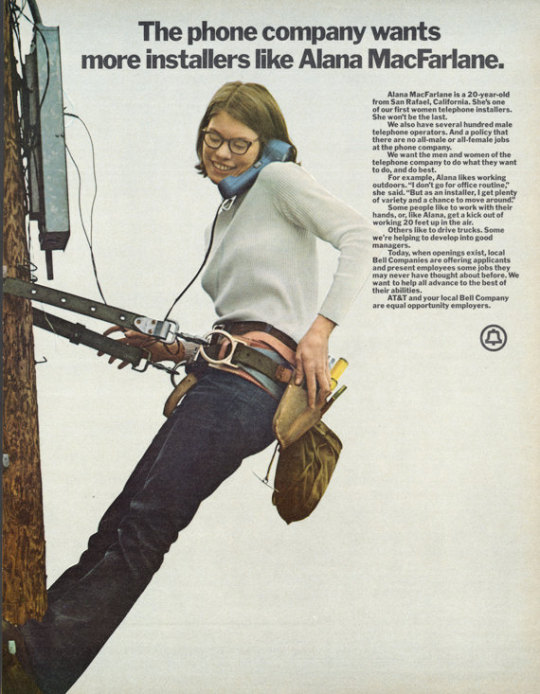
AT&T/Bell Telephone Company employment opportunity ad, 1972.
#technology#telecommunications#advertisement#AT&T#Bell Telephone Company#Alana MacFarlane#San Rafael#California#USA#1972
3K notes
·
View notes
Text
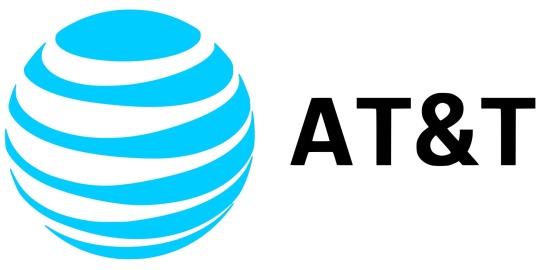



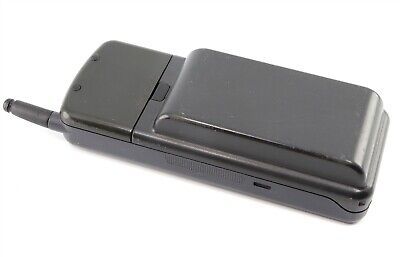

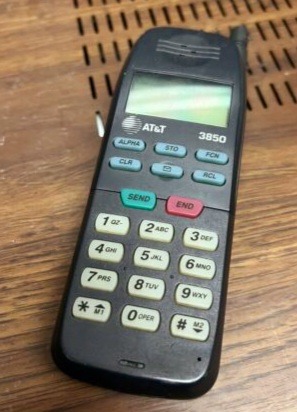
🇺🇸 Step back in time and delve into the fascinating history of AT&T's journey in the development and production of mobile phones! The AT&T Corporation (an abbreviation of its former name, the American Telephone and Telegraph Company) was a successor of the original Bell Telephone Company founded by the legendary inventor of the first practical telephone - Alexander Graham Bell in 1877.
👉 AT&T's division - Bell Laboratories, was created in 1925 from the consolidation of the R&D organizations of Western Electric and AT&T. Bell Labs made significant scientific advances, including the transistor, the laser, the solar cell, the digital signal processor chip, the Unix operating system, and the cellular concept of mobile telephone service.
🔍 AT&T's foray into the realm of mobile phones dates back to the early days of telecommunications. In the late 1940s, it embarked on pioneering efforts to develop mobile phone technology, laying the groundwork for future advancements in wireless communication.
💡 In the early years, AT&T, a huge telecommunications giant, focused on developing analog mobile phone systems, laying the groundwork for the future of wireless communication. Their first systems were limited to car phones, which required roughly 30 pounds of equipment in the trunk. These early devices were bulky and limited in functionality, but they represented a groundbreaking leap forward in telecommunications.
🏁 The first cellular phone was the culmination of efforts begun at AT&T Bell Labs and continued by Motorola Inc. While Motorola was developing the cellular phone itself, AT&T Bell Labs worked on the cellular system called AMPS. On April 3, 1973, Martin Cooper placed the first public call from a Motorola handheld portable cell phone to his counterpart Dr. Joel S. Engel at AT&T Bell Labs.
🏙 Advanced Mobile Phone System (AMPS) was an analog mobile phone system standard originally developed by AT&T Bell Labs and later modified in a cooperative effort with Motorola Inc. It was officially introduced in the USA on October 13, 1983. On this day, Bob Barnett, former president of Ameritech Mobile Communications, placed a call with a cell phone to the grandson of Alexander Graham Bell, who was in Germany for the event.
➡️ During the 1980s to 1990s, AT&T Corporation tried to achieve its place in the cell phone market and introduced some interesting devices: 3810, 3850, and 6650. Featuring sleek and ergonomic designs, they were a real testament to innovation and engineering excellence.
⚙️ Equipped with advanced features for its time, these phones boasted impressive functionality, including voice calling, text messaging, and address book capabilities. Their cutting-edge technology represented a leap forward in mobile communication, setting new standards for performance and reliability. These phones also ran on the AMPS 800 cell system.
📑 In 1996, AT&T spun off Bell Laboratories, along with most of its equipment manufacturing business, into a new company named Lucent Technologies. AT&T retained a small number of researchers who made up the staff of the newly created AT&T Labs. That meant the decline of future attempts at cell phone manufacturing by AT&T Corporation.
🌐 Today, AT&T continues to be a powerful multinational telecommunications holding company, offering a diverse range of cutting-edge services to consumers worldwide. With a rich legacy of innovation and a steadfast commitment to excellence, AT&T remains a leader in the ever-evolving landscape of telecommunications.
#old technology#techtime chronicles#companies#old tech#tech#technology#information technology#technews#corporations#electronics#at&t#bell labs#lucent#mobile phones#motorola inc#bell telephone company#american telephone and telegraph company#at&t corporation#cell phone#cell system#amps 800#alexander graham bell#car phone#telecomindustry#telephone#telecommunications#innovators#innovative#innovation#industry
4 notes
·
View notes
Text
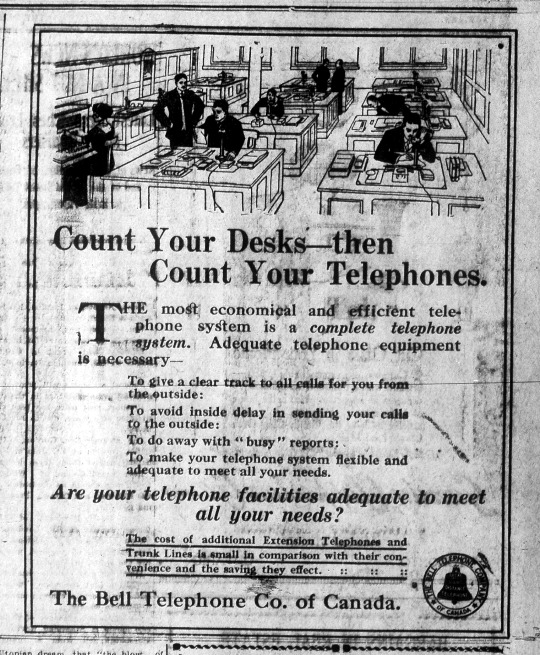
"Count Your Desks - then Count Your Telephones." Kingston Daily Standard. May 15, 1913. Page 5.
----
THE most economical and efficient telephone system is a complete telephone system. Adequate telephone equipment is necessary.
To give a clear track to all calls for you from the outside:
To avoid inside delay in sending your calls to the outside:
To do away with "busy" reports:
To make your telephone system flexible and adequate to meet all your needs.
Are your telephone facilities adequate to meet all your needs?
The cost of additional Extension Telephones and Trunk Lines is small in comparison with their convenience and the saving they effect.
The Bell Telephone Co. of Canada.
#bell telephone company#telephone#bell#communication capitalism#telecommunications#telephone operators#telephone connection#invention of the telephone#capitalism in canada
1 note
·
View note
Photo

Bilk System (MAD #212, January 1980)
Photographer: Irving Schild
#Mad magazine#ad parody#Bell System#1980s#phone call#expensive#love distance#humor#retro#telephone company
97 notes
·
View notes
Photo
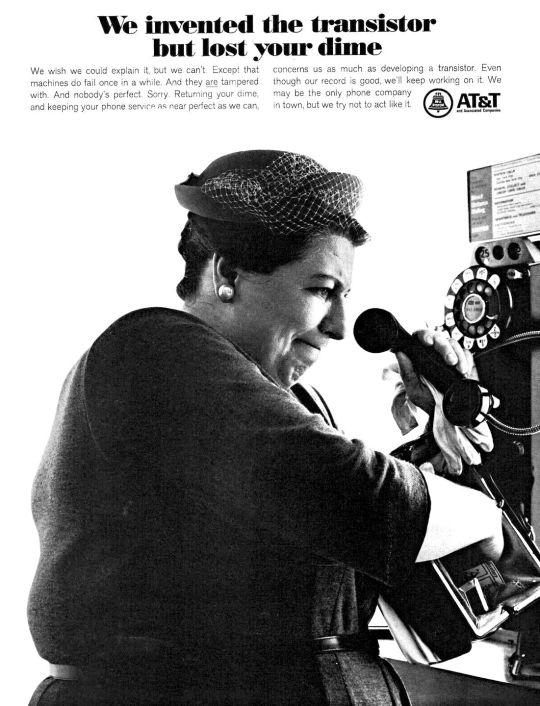
American Telephone & Telegraph Co, 1966
#AT&T#ad#1966#vintage#advertisement#pay phones#apology#1960s#dime#telephone#retro#transistor#fail#Ma Bell#phone company#advertising
103 notes
·
View notes
Text
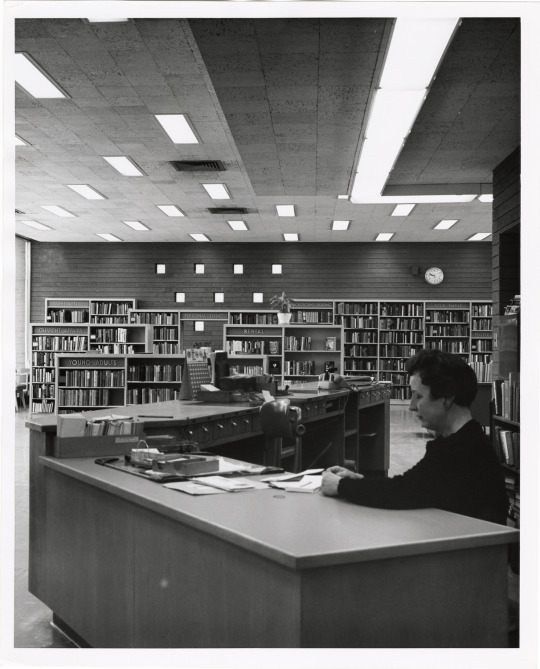
View of librarian at charge desk at the Chandler Park Branch Library, Detroit Public Library. Adult Reading Room in background. Stamped on back: "Michigan Bell Tel. Company Photographic. Jan 29, 1965." Label on back: "Chandler Park Branch. 12800 Harper. Charge desk with view of Adult Reading Room."
Courtesy of the Burton Historical Collection, Detroit Public Library
#detroit public library#library#librarian#chandler park#detroit#libraries#vintage#michigan bell telephone company photographic
94 notes
·
View notes
Text

1967 AT&T advertisement
#1967#bell company#at&t#art#telephone#vintageadsmakemehappy#vintage magazine#vintage advertising#magazine#advertising#60s#1960s
14 notes
·
View notes
Photo

The Traveler’s Telephone. An advertisement of the American Telephone and Telegraph Company - 1927.
#vintage advertising#vintage illustration#the bell system#american telephone and telegraph company#vintage telephones#at&t#telephones#bell telephone#ma bell
37 notes
·
View notes
Text

Vintage Poster - Cleopatra Movie Parody Poster
Advertising Poster
Mountain Bell Telephone Company (c.1970's)
From ha.com...
After much competition, the rival telephone companies came together in 1911 to form The Mountain States Telephone and Telegraph Company, providing telephone services to Colorado, Utah, Arizona, New Mexico, Montana, Southern Idaho, Wyoming, and El Paso, Texas. In 1969, the company went through a revamp, changing its name to Mountain Bell. To help advertise the company, this parody film poster were created, done in the style of silent period epic starring Theda Bara.
#Posters#Film#Silent Film#Theda Bara#Advertising#Women Of Film#Vintage#Art#Mountain States Telephone And Telegraph Company#The Mountain States Telephone And Telegraph Company#Telephone#Mountain Bell#Egypt#Egyptology#1970s#70s#Cleopatra
22 notes
·
View notes
Photo

January 25, 1915: A historic moment connecting the two coasts of the United States via phone lines when the first transcontinental phone call was made from NYC to San Francisco. The conversation took place between Alexander Graham Bell and Thomas A. Watson who on October 9, 1876 also had the first ever telephone conversation. The first transcontinental words were uttered by Dr Bell in NYC to his colleague in San Francisco: "Mr. Watson, are you there?"
The call was made from the 15th floor of the American Telephone and Telegraph Company at 15 Dey Street (aka 195 Broadway) in the Financial District.
#FirstTranscontinentalPhoneCall #AlexanderGrahamBell #ThomasAWatson #TelephoneHistory #AmericanTelephoneandTelegraphCompany #CommunicationsHistory #NewYorkHistory #NYHistory #NYCHistory #History #Historia #Histoire #Geschichte #HistorySisco
https://www.instagram.com/p/Cn21hg1u-Nl/?igshid=NGJjMDIxMWI=
#First Transcontinental Phone Call#Alexander Graham Bell#Thomas A. Watson#Telephone History#American Telephone and Telegraph Company#Communications History#New York History#NY History#NYC History#History#Historia#Histoire#Geschichte#HistorySisco
2 notes
·
View notes
Text
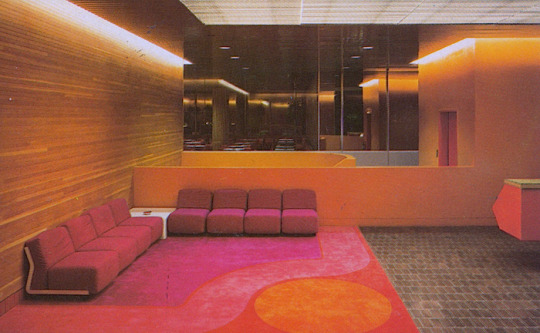
Pacific Northwest Bell Telephone Company office, Oregon, 1977.
#architecture#interior#interior design#furniture#Pacific Northwest Bell Telephone Company#Oregon#USA#1977
2K notes
·
View notes
Text
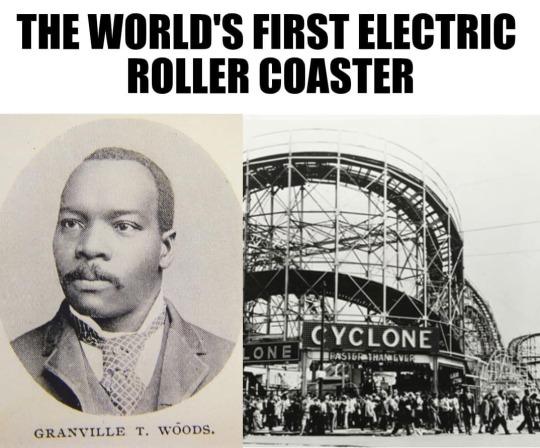
THE WORLD'S FIRST ELECTRIC ROLLER COASTER
Granville T. Woods (April 23, 1856 – January 30, 1910) introduced the “Figure Eight,” the world's first electric roller coaster, in 1892 at Coney Island Amusement Park in New York. Woods patented the invention in 1893, and in 1901, he sold it to General Electric.
Woods was an American inventor who held more than 50 patents in the United States. He was the first African American mechanical and electrical engineer after the Civil War. Self-taught, he concentrated most of his work on trains and streetcars.
In 1884, Woods received his first patent, for a steam boiler furnace, and in 1885, Woods patented an apparatus that was a combination of a telephone and a telegraph. The device, which he called "telegraphony", would allow a telegraph station to send voice and telegraph messages through Morse code over a single wire. He sold the rights to this device to the American Bell Telephone Company.
In 1887, he patented the Synchronous Multiplex Railway Telegraph, which allowed communications between train stations from moving trains by creating a magnetic field around a coiled wire under the train. Woods caught smallpox prior to patenting the technology, and Lucius Phelps patented it in 1884. In 1887, Woods used notes, sketches, and a working model of the invention to secure the patent. The invention was so successful that Woods began the Woods Electric Company in Cincinnati, Ohio, to market and sell his patents. However, the company quickly became devoted to invention creation until it was dissolved in 1893.
Woods often had difficulties in enjoying his success as other inventors made claims to his devices. Thomas Edison later filed a claim to the ownership of this patent, stating that he had first created a similar telegraph and that he was entitled to the patent for the device. Woods was twice successful in defending himself, proving that there were no other devices upon which he could have depended or relied upon to make his device. After Thomas Edison's second defeat, he decided to offer Granville Woods a position with the Edison Company, but Woods declined.
In 1888, Woods manufactured a system of overhead electric conducting lines for railroads modeled after the system pioneered by Charles van Depoele, a famed inventor who had by then installed his electric railway system in thirteen United States cities.
Following the Great Blizzard of 1888, New York City Mayor Hugh J. Grant declared that all wires, many of which powered the above-ground rail system, had to be removed and buried, emphasizing the need for an underground system. Woods's patent built upon previous third rail systems, which were used for light rails, and increased the power for use on underground trains. His system relied on wire brushes to make connections with metallic terminal heads without exposing wires by installing electrical contactor rails. Once the train car had passed over, the wires were no longer live, reducing the risk of injury. It was successfully tested in February 1892 in Coney Island on the Figure Eight Roller Coaster.
In 1896, Woods created a system for controlling electrical lights in theaters, known as the "safety dimmer", which was economical, safe, and efficient, saving 40% of electricity use.
Woods is also sometimes credited with the invention of the air brake for trains in 1904; however, George Westinghouse patented the air brake almost 40 years prior, making Woods's contribution an improvement to the invention.
Woods died of a cerebral hemorrhage at Harlem Hospital in New York City on January 30, 1910, having sold a number of his devices to such companies as Westinghouse, General Electric, and American Engineering. Until 1975, his resting place was an unmarked grave, but historian M.A. Harris helped raise funds, persuading several of the corporations that used Woods's inventions to donate money to purchase a headstone. It was erected at St. Michael's Cemetery in Elmhurst, Queens.
LEGACY
▪Baltimore City Community College established the Granville T. Woods scholarship in memory of the inventor.
▪In 2004, the New York City Transit Authority organized an exhibition on Woods that utilized bus and train depots and an issue of four million MetroCards commemorating the inventor's achievements in pioneering the third rail.
▪In 2006, Woods was inducted into the National Inventors Hall of Fame.
▪In April 2008, the corner of Stillwell and Mermaid Avenues in Coney Island was named Granville T. Woods Way.
473 notes
·
View notes
Text
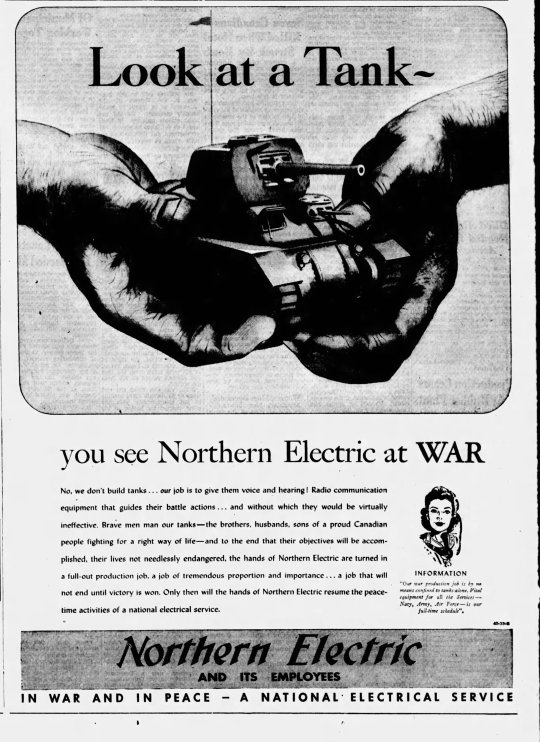
"Look at a Tank - you see Northern Electric at WAR," Ottawa Citizen. May 25, 1943. Page 2.
----
No, we don't build tanks... our job is to give them voice and hearing! Radio communication equipment that guides their battle actions... and without which they would be virtually ineffective. Brave men man our tanks - the brothers. husbands, sons of a proud Canadian people fighting for a right way of life - and to the end that their objectives will be accomplished, their lives not needlessly endangered, the hands of Northern Electric are turned in a full-out production job, a job of tremendous proportion and importance ... a job that will not end until victory is won. Only then will the hands of Northern Electric resume the peace-time activities of a national electrical service.
Northern Electric AND ITS EMPLOYEES
IN WAR AND IN PEACE - A NATIONAL ELECTRICAL SERVICE
#northern electric company#nortel#telecommunications company#radio manufacturing#modern warfare#armoured warfare#war economy#war propganda#canada during world war 2#vintage ads#vintage advertising#patriotic advertising#bell telephone company of canada
0 notes
Text
Just gonna start a list of all the references/puns in Mentopolis because my brain takes 25 minutes to recognize each one:
Mentopolis: mental+metropolis
PCs:
Detective Hunch Curio: curiosity
Imelda Pulse: impulse
The Fix: hyperfixation
Anastasia Tension: A. Tension (attention)
Daniel Fucks: he fucks (also pleasure/sexual pleasure/urges)
Conrad Schintz: conscience
NPCs:
Victim - Norrell Ojiccle: neurological
Curio's assistant - Anna Lysis: analysis
Employees at Sugah's:
Hans Schadenfreude: schadenfreude is the pleasure by someone from another person's misfortune
Joey Sneezes: sneezing?
Libby Longshower: the feeling after a long shower? (Libido?)
Donny Urges: intrusive thought
District Attorney (DA) Mark Bition: M. Bition (ambition)
Mayor Leon Logic: logic or maybe L. Logic (illogical?)
Mr. Lance: vigilance?
The basset hound - Justin Fication: justification
Madam Loathing: loathing (self-loathing)
Orphans: forgotten/abandoned (wayward) interests (magic, reptiles, trains, lists)
Mr. Avaricci: avarice?
Locations:
Cortex City: external surface of the brain that plays an important role in consciousness
Oblongata Station: medulla oblongata - the connection between the brainstem and the spinal cord that acts as a conduit for nerve signals
Cerebell Pacific: cerebrum and/or cerebellum and also Pacific Bell telephone company
Synaptic Switchboard: synapse - the site of transmission of electrical nerve impulse
Temporal Square: temporal lobe
Hippo Campus University: hippocampus is a brain structure in the temporal lobe that has a major role in learning and memory
Occipital Park: occipital lobe is the area of the brain at the back of the head responsible for visual perception
Let me know if I missed anything or there's better references
478 notes
·
View notes
Note
Does Battletech has lore as unhinged as 40k or did you mean it as just tabletop wargame?
I am already looking for fandom migration and Battletech doesn't sound bad but what captivated me about 40k is eclecticism and everything being over the top so
Battletech is a story about feudalism and bands of knights riding their steeds to victory against impossible odds. It's a story about the decay of technology after constant warfare. It's a story about racism and how extremism twists even the most righteous ideals into something wicked. It's a story about the Bell Telephone Company becoming a religion in order to preserve communications technology, and the schism of that religion causing every star to bleed. You also get super cool robots. And it's way cheaper than 40k.
I wouldn't say it's as over the top, but if you want to get into the lore, try reading the Blood of Kerensky series and see if you like that.
115 notes
·
View notes
Text
Technology from 1870-1899 (For Encanto fic writers)
So, A mutual of mine @miracles-and-butterfliess pointed out that everyone (including me) tends to forget that Encanto was literally made when the triplets were born. Which is literally 1900 or 1901. Regardless, it was the very beginning of the 19th century so let me tell you about the technology/things they would/wouldn’t have. (And please keep in mind that most of these may or may not have been imported into Colombia yet.)
1870 - 1879
1872—A.M. Ward creates the first mail-order catalog. NO
1873—Joseph Glidden invented barbed wire. NO
1876—Alexander Graham Bell patents the telephone. NO
1876—Nicolaus August Otto invents the first practical four-stroke internal combustion engine. NO
1876—Melville Bissell patents the carpet sweeper. NO?
1878—Thomas Edison invents the cylinder phonograph (known then as the tin foil phonograph). MAYBE
1878—Eadweard Muybridge invents moving pictures. NO?
1878—Sir Joseph Wilson Swan invents the prototype for a practical electric lightbulb. YES?
1879—Thomas Edison invented the first commercially viable incandescent electric light bulb. NO?
1880 - 1889
1880—The British Perforated Paper Company debuts toilet paper. YES
1880—English inventor John Milne creates the modern seismograph. NO
1881—David Houston patents camera film in roll format. NO?
1884—Lewis Edson Waterman invents the first practical fountain pen. YES
1884—L. A. Thompson built and opened the first roller coaster in the United States at a site on Coney Island, New York. NO
1884—James Ritty invents a functional mechanical cash register. YES?
1884—Charles Parson patents the steam turbine. NO
1885—Karl Benz invented the first practical automobile powered by an internal-combustion engine. NO (even before Encanto, Alma’s town looked rural so I doubt the automobile reached them yet.)
1885—Gottlieb Daimler invented the first gas-engine motorcycle. NO
1886—John Pemberton introduces Coca-Cola. NO
1886—Gottlieb Daimler designs and builds the world's first four-wheeled automobile. NO
1887—Heinrich Hertz invents radar. NO
1887—Emile Berliner invented the gramophone. YES
1887—F.E. Muller and Adolph Fick invented the first wearable contact lenses. NO
1888—Nikola Tesla invents the alternating current motor and transformer. NO
1890 - 1899
1891—Jesse W. Reno invents the escalator. NO
1892—Rudolf Diesel invents the diesel-fueled internal combustion engine, which he patents six years later. NO
1892—Sir James Dewar invents the Dewar vacuum flask. NO
1893—W.L. Judson invents the zipper. NO (zippers didn’t become popular globally until a little bit later; buttons, ribbons/laces and whatever else were still the norm/in fashion for fastening and tying (which is still the case in some places today)
1895—Brothers Auguste and Louis Lumière invent a portable motion-picture camera that doubles as a film-processing unit and projector. The invention is called the Cinematographe and using it, the Lumières project the motion picture for an audience. NO?
1899—J.S. Thurman patents the motor-driven vacuum cleaner. NO (if you're running from being killed, the last thing you're going to bring is a vacuum cleaner)
I remember a post listing the sort of jobs there would be in Encanto but I forgot so I’ll just list the ones I know (let me know if I need to add anything.):
Seamstress/tailor
Embellisher
Field worker
Teacher (of any kind; music, dance, art, etc)
Woodworker - wood carver
Toy maker
Construction worker
Joining a Local band/ Orchestra - being apart of a choir
Carpenter
Metal worker
Jeweler (though I’m not sure if Jewelery of the diamond/gem kind is common in Encanto)
bladesmith/ knifemaker
Inventor? (Inventors should exist in Encanto by now…just one other genius besides Mirabel?)
I know some of these are very obvious but I’m just giving people options okay?
@miracles-and-butterflies you seem to know a lot more about this kind of stuff so if you have anything to add/take away or me to fix please let me know. I tried to search up “When was X invention imported into Colombia” and literally nothing of use comes up.
#camilo madrigal#bruno madrigal#mirabel madrigal#dolores madrigal#antonio madrigal#isabela madrigal#pepa madrigal#encanto 2021#encanto au#encanto fanfic
86 notes
·
View notes